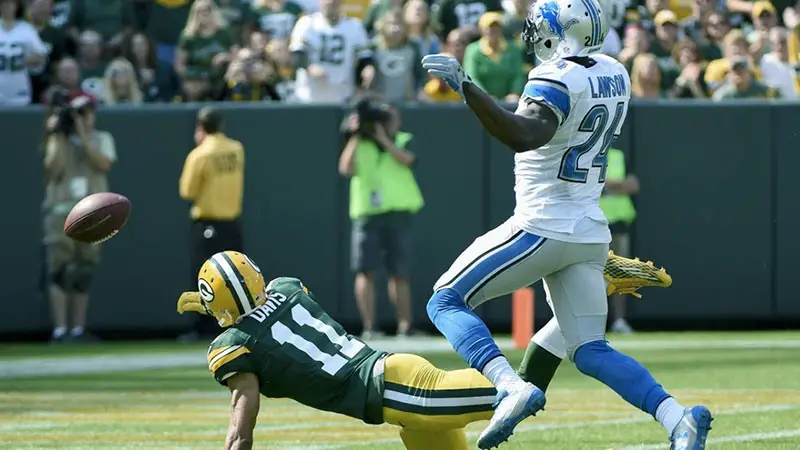American football emphasizes strategy, skill, and strict rules, with the clipping penalty being crucial for player safety. Clipping, blocking an opponent from behind and below the waist, can cause severe injuries.
Understanding this penalty highlights the importance of fair play and protection on the field. Officials monitor clipping closely, and violations result in a 15-yard penalty, which can affect game momentum.
Teams train players to avoid this infraction through proper blocking techniques. Fans and aspiring athletes benefit from comprehending these rules, which are vital for the sport’s integrity and safety.
This awareness extends to coaches and referees, who play a pivotal role in enforcing these standards uniformly. Ensuring compliance not only maintains the integrity of the game but also promotes a safer environment for all participants.
Knowing the implications of a clipping penalty can influence game strategy, making awareness crucial for coaches and players alike. Continuous education on this rule fosters a culture of safety and fairness in football.
From Rulebook to Field: Clipping Penalties Explained
Officials use the clipping penalty in American football to maintain safety and fairness. Players and fans need a thorough understanding.
Definition
Clipping is an illegal block from behind below the waist, resulting in a 15-yard penalty, aimed at preventing injuries and promoting player safety. Coaches stress legal blocking techniques to avoid this infraction and encourage fair play.
Understanding and enforcing clipping penalties is crucial for fair competition and maintaining the game’s standards. Officials closely monitor for clipping to uphold integrity, and repeated violations can lead to severe consequences, including ejections.
Awareness of these rules enhances player safety and emphasizes the importance of sportsmanship in American football.
Outcome
When officials call a clipping penalty, the offending team incurs a 15-yard penalty from the spot of the foul, which can significantly impact their field position and offensive momentum. Clipping penalties can disrupt crucial plays and create difficult down-and-distance situations.
Coaches stress proper blocking techniques, and players must be mindful of their positioning. Following fair play guidelines can reduce penalties and improve a team’s chances of success.
Consistent training and vigilance are essential to avoid these infractions and maintain the game’s flow. Focusing on legal blocking strategies helps teams minimize risks and maintain their offensive progress towards the end zone.
Penalties By Season
Tracking penalties by season helps identify patterns in gameplay. In the 2020 NFL season, there were 42 clipping calls, showing a decrease compared to previous seasons. This likely reflects increased emphasis on player safety and rule enforcement.
Coaches and players adapt their strategies to align with evolving safety protocols while maintaining competitive integrity.
Understanding the impact of these penalties is crucial for teams as the league implements stricter guidelines, further enhancing player safety while preserving the dynamic nature of the game.
Penalties By Season Per Game
Analyzing penalties per game provides deeper insights. In the 2020 season, the average was 0.16 clipping penalties per game. Understanding these figures shows rule enforcement effectiveness and aids in strategizing for cleaner gameplay.
By focusing on reducing such penalties, teams can improve player education and techniques, fostering a safer and more competitive environment.
Additionally, decreasing clipping penalties can enhance game flow and reduce stoppages, making it more enjoyable for fans. Staying current with rule changes and consistent training ensures players can avoid infractions and positively contribute to the sport.
The Impact of a Clipping Penalty
A clipping penalty significantly affects a team’s performance in American football. This penalty alters field position and disrupts offensive strategy.
Penalty Yardage and Repercussions
Clipping results in a 15-yard penalty, which can disrupt offensive drives and force teams into difficult third-and-long situations, reducing their chances of success.
Coaches adjust their strategies to account for this penalty, as repeated clipping can impact team morale and cause turnovers. Officials are vigilant against clipping to ensure fair play and player safety.
Players are trained to avoid such infractions through proper technique and awareness, reinforced by video analysis of past games to correct tendencies. This proactive approach reduces penalties and improves overall team efficiency.
Effects on Game Strategy
A clipping penalty can force teams to modify their approach. Offensive coordinators may call safer plays to avoid further penalties. Defenses also benefit, gaining better field position.
The 42 instances of clipping in the 2020 NFL season highlight the need for clean gameplay to maintain offensive momentum. With an average of 0.16 clipping penalties per game, teams must stay aware of blocking techniques.
The consistent enforcement of this rule ensures player safety and fairness. While rare, its impact on game flow cannot be overlooked, urging teams to refine their strategies and coaching to reduce infractions.
Rules and Regulations
Understanding the rules and regulations of clipping in American football is vital for maintaining safe and fair play. These regulations are outlined in detail in the NFL rulebook, which serves as the authoritative guide for players, coaches, and officials.
The NFL Rulebook on Clipping
Clipping, defined as an illegal block from behind below the waist, is penalized by a 15-yard loss in the NFL to protect players from serious injuries. The rulebook emphasizes the spot of the foul over yardage gained or lost.
In 2020, there were 42 instances of clipping, underscoring the need for adherence. Officials enforce this rule to maintain clean gameplay. A detailed understanding of the clipping penalty is essential for players and coaches.
Consistent enforcement helps ensure a safer environment on the field, thereby reducing the risk of significant injuries.
Exceptions to the Rule
While clipping is generally prohibited, certain exceptions exist. Players within a close line of scrimmage before the ball has left the tackle box are not penalized. These specific conditions allow certain blocks, provided they occur in an immediate area near the ball’s initial snap.
Risks associated with clipping decrease under these circumstances due to the short distances and reduced speeds involved. Nevertheless, officials must accurately interpret and apply these exceptions to maintain player safety and game integrity.
Frequently Asked Questions
What is the clipping penalty in American football?
Clipping in American football is an illegal block where a player hits an opponent from behind, below the waist. This action is penalized with a 15-yard setback, significantly affecting field position and game strategy.
Why is clipping penalized in football?
Clipping is penalized to protect player safety and ensure fair play. By making clipping illegal, the sport aims to prevent injuries that could arise from dangerous and unexpected low blocks from behind.
How does a clipping penalty impact a game?
A clipping penalty results in a 15-yard loss for the offending team, which can dramatically alter field position and influence game dynamics, making it harder for the offending team to advance.
Are there any exceptions to the clipping rule?
Yes, there are exceptions. Certain blocks near the line of scrimmage before the ball is snapped are allowed, which helps in maintaining the flow of the game while still prioritizing player safety.
How common is clipping in the NFL?
Clipping in the NFL is fairly uncommon but does occur. For instance, in the 2020 season, there were 42 recorded instances, highlighting the rule’s importance in maintaining safe and fair gameplay.
Conclusion
Clipping penalties are essential in American football to protect players and ensure fair competition. The 15-yard penalty for clipping significantly affects field position and can change the momentum of a game.
NFL regulations on clipping are stringent to prevent injuries and maintain the sport’s integrity. Exceptions to the rule are minimal, highlighting the importance of strict enforcement.
With 42 clipping penalties recorded in 2020, it’s clear that officials play a vital role in upholding these standards, contributing to safer and more equitable gameplay.
Understanding and adhering to these rules is crucial for players, coaches, and fans alike. For coaches, thorough knowledge of clipping penalties can inform training strategies and help in minimizing infractions.
Meanwhile, fans gain a deeper appreciation for the sport’s complexity and the rules that govern fair play.








Ashley Hopkinson